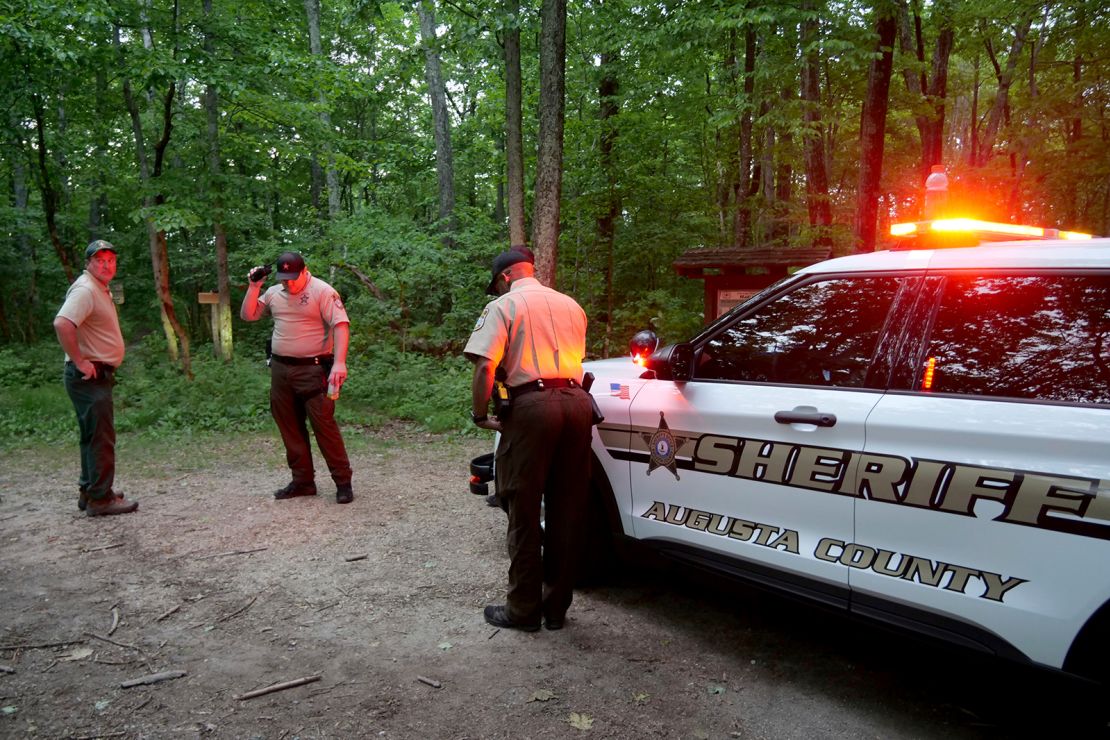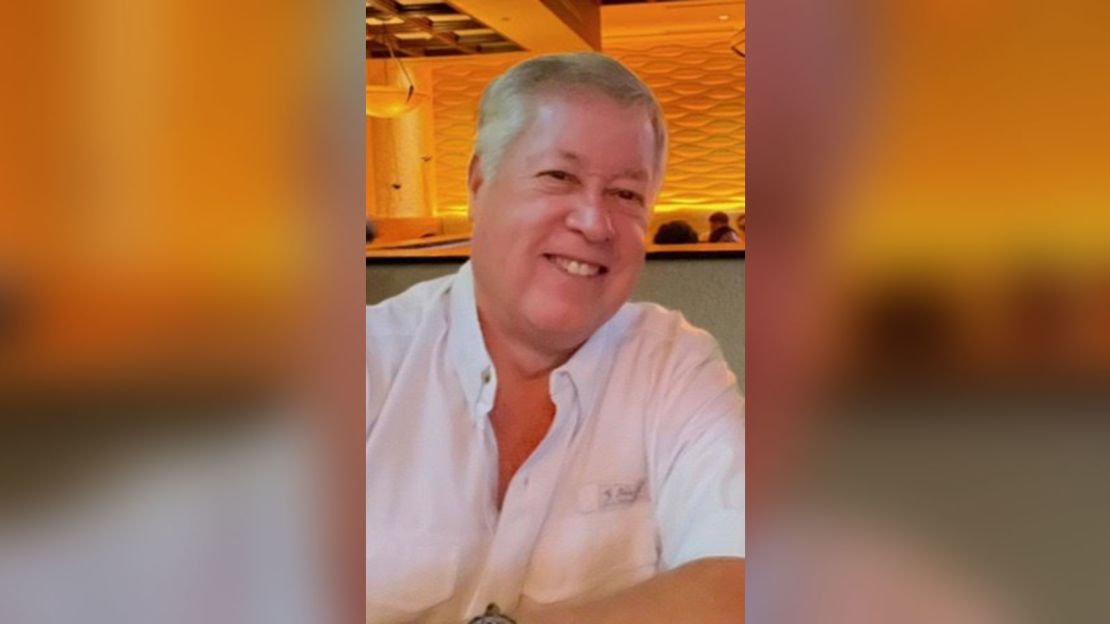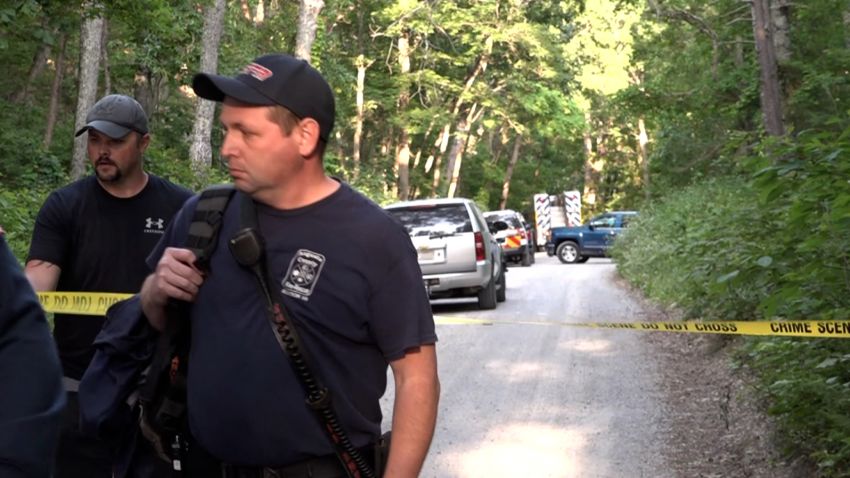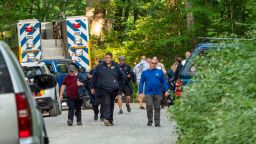Investigators examining the wreckage of a private plane that crashed Sunday in Virginia – killing all four people onboard after its pilot became unresponsive – say they will wrap up their work at the scene Wednesday and begin planning how to recover pieces of the plane.
So far, National Transportation Safety Board investigators have faced challenging rural terrain and the near total devastation of the aircraft, a federal official said.
A team began sifting through the wreckage Monday, trying to determine when the pilot became unresponsive and what caused the aircraft to veer dramatically off course. The unresponsive aircraft prompted the deployment of six fighter jets as it flew near Washington, DC, officials said.
Now investigators are considering whether hypoxia – a potentially deadly condition caused by lack of oxygen – is a reason the pilot and passengers didn’t respond to efforts to contact the plane, a source said.
The aircraft ultimately slammed into a heavily wooded area near Waynesboro, Virginia, leaving a crater in the ground and a grizzly scene for investigators to examine, first responders said Monday.
“The wreckage is destroyed, meaning that it is no longer distinguishable as an aircraft. However, there’s still several pieces that might be able to assist our fact-finding stage at this point,” Adam Gerhardt, lead investigator with the safety board, said Monday.
The agency had said it would begin recovering salvageable pieces of the plane, a Cessna 560 Citation V, on Tuesday.
“During the next phase of the investigation, investigators will analyze manufacturing and maintenance records and conduct interviews,” a Tuesday statement from NTSB said. The agency expects to publish a preliminary report in three weeks.
The crash site is a lengthy hike through the densely forested, mountainous terrain, the NTSB told CNN. Gerhardt said the agency plans to helicopter pieces of the wreckage to a secure facility in Delaware in the coming days.
Investigators have been scouring the crash scene for a flight data recorder or cockpit voice recorder, known as “black boxes,” though the aircraft was not required to have them, Gerhardt said.
No survivors were found when the crash site was discovered Sunday night, officials said, though signs of human remains were found, according to first responders who spoke on the condition they not be identified.
A member of the family whose company, Encore Motors, owned the plane told The Washington Post that his daughter, her toddler and their nanny were among those killed in the crash.
John Rumpel, who confirmed to CNN that he and his wife Barbara own the company, told the newspaper that his daughter Adina Azarian, his 2-year-old granddaughter, Aria Azarian, and the nanny were supposed to be flying to their home in East Hampton, New York.

Rumpel told the Post that he got a call from the FAA about 90 minutes after dropping them off at an airport in eastern Tennessee. The agency asked if he knew how to contact the plane, he said.
Rumpel identified the pilot as Jeff Hefner, according to the report.
The private plane took off from the airport in Elizabethton, Tennessee, and overshot its destination – New York’s Long Island MacArthur Airport – before turning around and heading in the direction of Washington, DC, according to NORAD and air travel tracking website FlightAware.
As it approached the capital region at a 34,000-foot altitude, air traffic controllers, civilian pilots and the F-16 pilots urgently tried to contact the unresponsive Cessna by radio, audio from LiveATC.net revealed.
Six F-16s were launched from three bases and raced to intercept the private plane, White House National Security Council Coordinator for Strategic Communications John Kirby said Monday.
The pilot was seen slumped over in his seat in the cockpit, a source familiar with the response told CNN.
A US official said the F-16s did not shoot down the aircraft. The official noted it is typical for the FAA to call in jets if someone is flying unsafely.
Source: Hypoxia being investigated as potential factor
Hypoxia poses a threat when flying at high altitudes and could have occurred if the Cessna’s cabin suddenly depressurized, according to aviation experts.

Cerebral hypoxia can happen if there is a loss in cabin pressure or the plane reaches too high an altitude. The higher the altitude, the faster a person loses oxygen.
At the 34,000-foot altitude where the Cessna jet was flying, pilots have 30 to 60 seconds to don oxygen masks if the plane is depressurized or risk falling unconscious.
The onset of symptoms is so subtle that it’s hard for a person to tell when it is happening to them. They might begin breathing at an increased rate, feel dizzy, lose coordination and experience impaired judgment. When a brain goes without oxygen for too long, the part of the brain that helps with respiration can stop working and prevent a person from breathing.
Hypoxia was likely what caused the 1999 crash that killed professional golfer Payne Stewart and five other passengers near Aberdeen, South Dakota, according to National Transportation Safety Board investigators. Stewart was traveling from Florida to Texas for a tournament, when his Learjet 35 flew off course for about 1,500 miles – while the passengers on board were apparently unconscious or dead – before crashing.
The damaged cockpit recorder picked up no voices, but it did pick up the sound of a low-pressure alarm going off, investigators said. They said Stewart’s plane was likely flying on autopilot before the crash.
Investigators are now examining the private plane’s autopilot function in the Virginia crash, a source familiar with the investigation said.
Mother and pilot who died remembered as professionals and parents
One of the passengers killed in the crash, identified by her father as Adina Azarian, was “a very devoted mother of her two-year-old daughter, Aria,” her employer, real estate company Keller Williams, said in an online post.

Azarian began working for Keller Williams in 2011 after founding her own real estate firm, which the company said was “one of the first female-run real estate brands in NYC.”
“Adina was known for her dedication, professionalism, and warm spirit. Her vibrant personality and unwavering commitment to her clients set her apart in the real estate industry,” Keller Williams’ New York City branch said in the post.
The nanny who Rumpel said was also on the plane has not been identified.

Hefner, the pilot identified by the Azarian’s father, had flown numerous private aircraft after working as a commercial pilot, according to the head of a law firm he previously worked at as a flight captain.
Hefner was “a highly accomplished and skilled aviator,” said attorney Dan Newlin. “He flew 25 years with as a captain with Southwest Airlines and had over 25,000 flight hours.”
Hefner is survived by his wife and three children, Newlin said.
F-16s caused sonic boom rushing to intercept plane
Just 15 minutes after the plane took off in Tennessee, the FAA lost contact with the small jet, according to a statement from the agency and data from the agency and FlightAware.
Shortly after the plane went silent, the agency alerted the “Domestic Events Network” that includes the military, national security, homeland security and other law enforcement agencies, according to the FAA statement.
It’s unclear whether the plane entered restricted airspace.
As the Cessna continued to be unresponsive and flew near Washington, DC, the F-16 jets were “authorized to travel at supersonic speeds” to make contact with the aircraft, according to a Continental US North American Aerospace Defense Command Region news release.
The F-16s’ speeds caused a sonic boom to reverberate across the Washington region, officials said, meaning they were traveling faster than the speed of sound, creating shock waves that caused a sudden and resounding boom.
Some residents on the ground reported being startled by the sound.
The US Capitol complex was placed on an “elevated alert” when the plane flew near the area Sunday afternoon, US Capitol Police said in a statement.
Correction: An earlier version of this story gave the wrong source for information about the course taken by the private plane. The information came from NORAD and FlightAware.
CNN’s Lauren Mascarhenas, Amanda Jackson, Natasha Bertrand, Haley Britzky, Greg Wallace, Chris Boyette, Brian Todd and Lauren Koenig contributed to this report.


